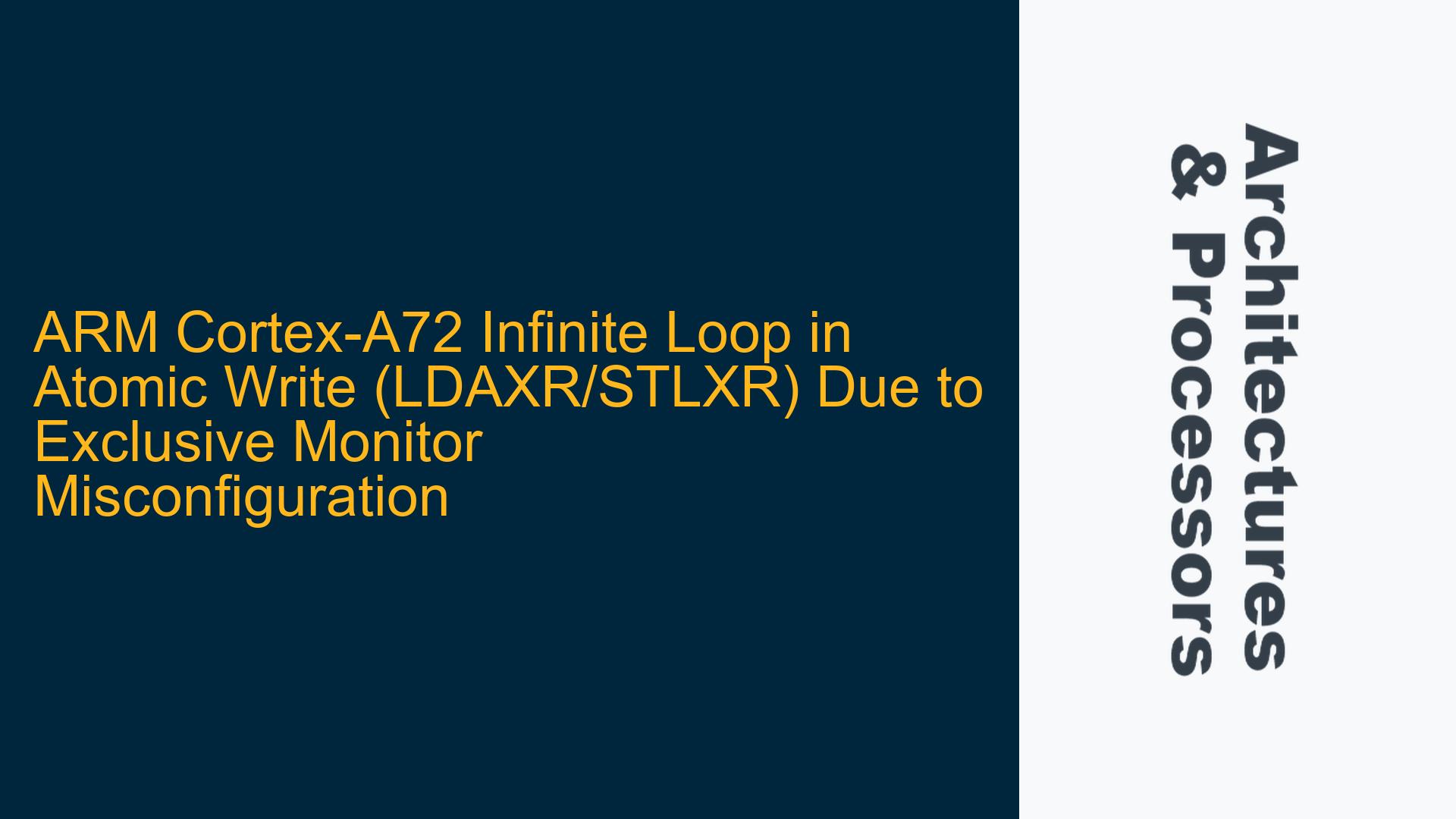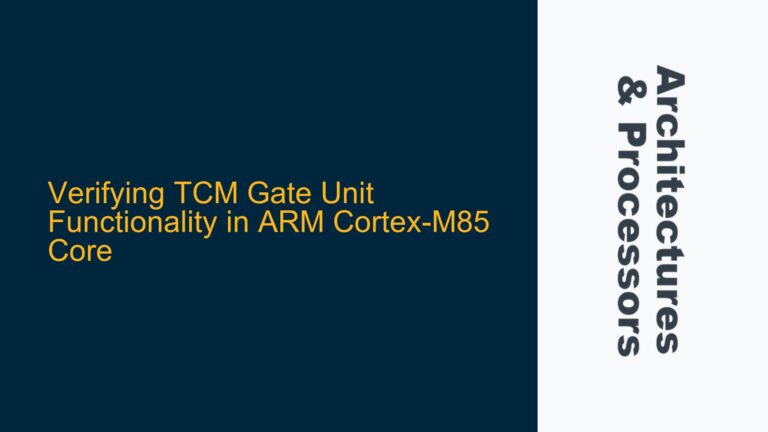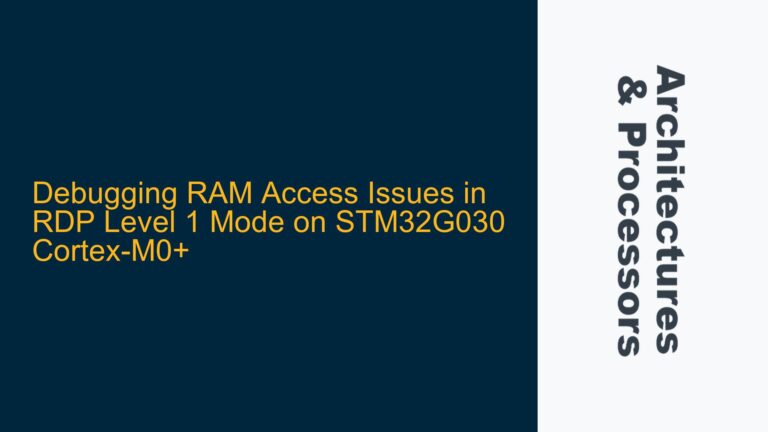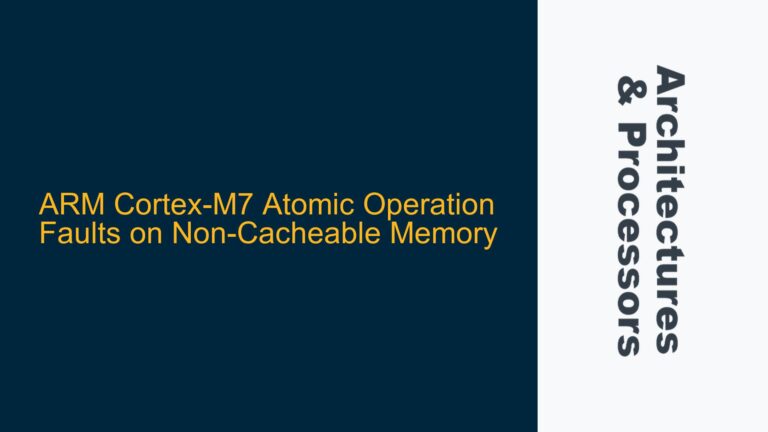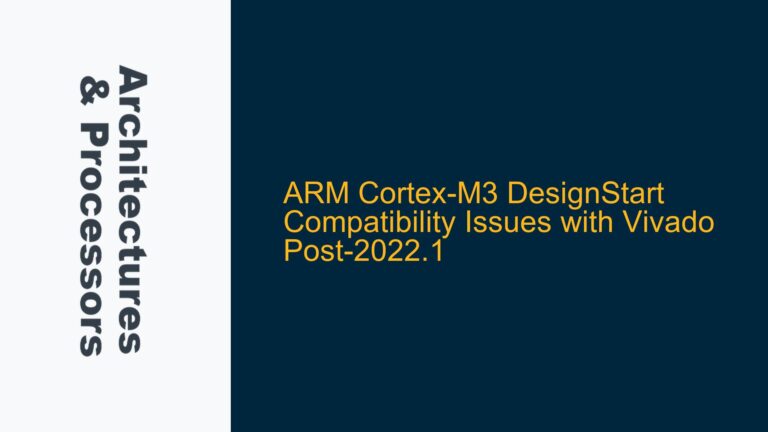ARM Cortex-A72 Atomic Write Failure with LDAXR/STLXR Instructions
The issue at hand involves an infinite loop occurring during the execution of atomic write operations using the LDAXR (Load-Acquire Exclusive Register) and STLXR (Store-Release Exclusive Register) instructions on an ARM Cortex-A72 processor. The code in question attempts to perform an atomic modification of a memory location but fails to progress beyond the atomic write loop, resulting in a deadlock. This behavior is indicative of a failure in the exclusive monitor mechanism, which is responsible for ensuring atomicity in multi-core or multi-threaded environments.
The Cortex-A72 processor, part of the ARMv8-A architecture, relies on the exclusive monitor to track exclusive load and store operations. When the exclusive monitor fails to validate the atomic operation, the STLXR instruction returns a non-zero value in its status register, causing the code to retry the operation indefinitely. This issue is particularly problematic in systems where the memory subsystem or the exclusive monitor is not properly configured, leading to unexpected behavior in atomic operations.
MMU Configuration and Memory Type Requirements for Exclusive Access
One of the primary causes of this issue is the improper configuration of the Memory Management Unit (MMU) and the memory type associated with the target address. The ARMv8-A architecture requires that the memory region being accessed by LDAXR and STLXR instructions must be mapped as "Normal" memory. Normal memory is characterized by attributes such as cacheability, shareability, and access permissions that are compatible with the exclusive monitor’s operation.
In the provided code, the target address for the atomic operation is located in the BSS section, which is typically uninitialized memory. However, the code does not explicitly enable the MMU or configure the memory attributes for the BSS section. Without the MMU enabled, the memory type defaults to "Device" or "Strongly-Ordered" memory, which does not support exclusive access operations. This mismatch between the memory type and the requirements of the exclusive monitor leads to the observed infinite loop.
Additionally, the exclusive monitor’s behavior is implementation-defined in the ARM architecture. Some implementations may require the MMU to be enabled and the memory region to be explicitly marked as Normal memory for the exclusive monitor to function correctly. The Cortex-A72 processor, in particular, is known to enforce these requirements strictly, making it essential to ensure proper MMU and memory configuration.
Enabling MMU and Configuring Memory Attributes for Atomic Operations
To resolve the infinite loop issue, the following steps must be taken to ensure proper configuration of the MMU and memory attributes:
-
Enable the MMU: The MMU must be enabled to allow proper memory attribute configuration. This involves setting up the translation tables and enabling the MMU in the system control register (
SCTLR_EL1). The translation tables should map the BSS section and other relevant memory regions with the appropriate attributes. -
Configure Memory Attributes: The memory region used for atomic operations must be mapped as Normal memory. This involves setting the memory type attributes in the translation tables to indicate that the region is cacheable and shareable. The exact attributes depend on the system’s requirements, but typically, Normal memory is configured with the following attributes:
- Cacheable: Allows caching of the memory region, improving performance.
- Shareable: Ensures that the memory region is visible to all cores in a multi-core system, which is essential for atomic operations.
-
Initialize the Exclusive Monitor: Although the exclusive monitor is typically enabled by default, it is good practice to ensure that it is properly initialized. This may involve clearing any stale state in the exclusive monitor before performing atomic operations.
-
Verify Alignment and Address Range: The target address for the atomic operation must be properly aligned according to the size of the access. Misaligned accesses can cause the exclusive monitor to fail, leading to the infinite loop. Additionally, the address range must be within the region recorded by the exclusive monitor.
-
Debugging and Testing: After configuring the MMU and memory attributes, it is essential to verify the behavior of the atomic operations. This can be done by adding debug prints or using a debugger to step through the code and inspect the values of the exclusive monitor status registers.
By following these steps, the infinite loop issue can be resolved, and the atomic operations will function as expected on the Cortex-A72 processor. Proper configuration of the MMU and memory attributes is critical to ensuring the correct operation of the exclusive monitor and the overall reliability of the system.
Detailed Analysis of Exclusive Monitor Behavior and Implementation-Defined Considerations
The exclusive monitor in the ARMv8-A architecture is a hardware mechanism that tracks exclusive load and store operations to ensure atomicity. When a LDAXR instruction is executed, the exclusive monitor records the address and marks it as exclusive to the current processor. A subsequent STLXR instruction checks the exclusive monitor to ensure that the address is still marked as exclusive before performing the store operation. If the exclusive monitor’s state has been invalidated (e.g., due to another core accessing the same address), the STLXR instruction fails and returns a non-zero status, causing the code to retry the operation.
The behavior of the exclusive monitor is implementation-defined, meaning that different ARM processors may handle exclusive access operations differently. In the case of the Cortex-A72, the exclusive monitor is tightly integrated with the memory subsystem and requires proper configuration of the MMU and memory attributes. Failure to meet these requirements can result in the exclusive monitor failing to validate the atomic operation, leading to the infinite loop observed in the provided code.
One key consideration is the interaction between the exclusive monitor and the memory type. Normal memory is required for exclusive access operations because it supports the necessary cache coherency protocols and shareability attributes. Device or Strongly-Ordered memory, on the other hand, does not support these protocols and is incompatible with the exclusive monitor. This is why enabling the MMU and configuring the memory attributes is essential for resolving the issue.
Another consideration is the timing of memory aborts and exclusive monitor checks. The ARMv8-A architecture allows implementations to choose whether memory aborts are detected before or after the exclusive monitor check. This means that in some cases, a memory access that would result in an abort (e.g., due to misalignment) may still cause the exclusive monitor to fail, even if the abort is not explicitly triggered. This further emphasizes the importance of ensuring proper alignment and memory configuration.
In conclusion, the infinite loop issue with LDAXR and STLXR instructions on the Cortex-A72 processor is primarily caused by improper MMU and memory configuration. By enabling the MMU, configuring the memory attributes, and ensuring proper alignment, the issue can be resolved, and the atomic operations will function as intended. Understanding the behavior of the exclusive monitor and its interaction with the memory subsystem is critical to developing reliable and efficient code for ARMv8-A processors.
